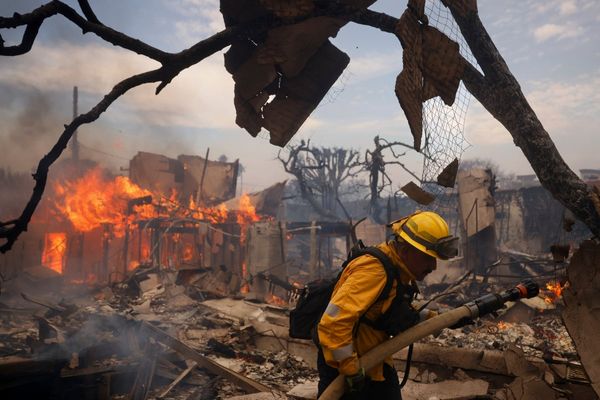
Internationally, at least, the economic issue that has dominated 2023 seems to be resolving, and quicker than expected.
At the start of the year, US consumer prices were rising at an annual rate of 6.5% in January and 6.4% in February. In November, growth was back to 3.1%. In the Eurozone, inflation of 9.2% in January was down to 2.4% in November. The UK saw January’s 10.5% rate slide to 3.6% in November — and down from 4.5% a month earlier, too.
The faster-than-expected fall has been accomplished with little or no visible cost — yet — in terms of higher unemployment or falling wages. Real wage growth has been happening in the US now for several months, is making appearances in parts of Europe, and began to appear in Japan earlier in the year. It may soon return in Australia, if Reserve Bank and Treasury forecasts are correct.
There may be cyclical factors for why unemployment has barely shifted despite a global significant tightening in interest rates, but we’d suggest it’s the first sign of a theme that will dominate economics for the rest of the century: a lack of workers, at least in occupations where AI and robotics haven’t yet provided workable replacement options (and good luck with that in the fastest-growing area of the economy, health and caring services, which still require real humans).
But China is ending 2023 with deflation at the consumer level dominating (thanks to slumping pork prices) and at the producer level as well, despite solid demand for major commodities such as copper, thermal coal and iron ore. China also faces a property crunch next year, with half a dozen big developers failed, failing or verging on failing, and hundreds of billions of dollars in debt to be accounted for one way or another among companies and local governments.
If China had inflation, the clever option would be to do nothing and allow inflation to gradually reduce the value of the debt, while lifting property prices and improving the financial/asset positions of stricken companies and local governments. But deflation will make for years of hard labour for President Xi Jinping. And every year that passes in China slowly increases the demand problem created by an ageing population. As a Chinese think-tanker told Crikey earlier this year, what worries them in China isn’t the shrinking workforce produced by an ageing population, but the shrinking demand it will cause.
The fall in inflation hasn’t been as great here, but the Australian Bureau of Statistics’ monthly inflation indicator has fallen from 7.5% in January to 4.9% in October — despite all the hysteria from business, the Financial Review and even the Reserve Bank about productivity, nominal versus real wage costs and wage/prices spirals. Perhaps the high levels of concentration in the economy, and the lack of interest in how much corporate greed has driven inflation on the part of policymakers, have prevented inflation from falling as rapidly here as elsewhere?
What the great focus on inflation in 2023 has also done has been to shine a light on just how ordinary the quality of economic debate in Australia is — including in some of our most important institutions.
It’s widely accepted now that both governments and central banks overreacted to the pandemic with far too much stimulus. No blame attaches to that — it was entirely understandable given that we hadn’t had a global pandemic for a century, its impacts were uncertain and everyone was terrified about what was happening. Even former RBA governor Philip Lowe’s notorious “no rate rises until 2024” was said in the context of a central bank that feared the four horsemen of the apocalypse had just ridden into town. We can all be critics now (and we are), but it’s about learning the lessons about what worked and what didn’t and how we assess what to do in the event of another crisis like that — because, almost certainly, there will be one.
But the responses of the Reserve Bank, and of many economic commentators and lobbyists, to the inflation surge that followed the pandemic and Russia’s attack on Ukraine were very different. It was characterised by wilful, reckless ignorance, an ideological bias against workers, and an inability to think beyond the textbooks of the 1970s and 1980s.
It was as long ago as September 2022 when Crikey discussed why central bankers needed to adjust their thinking to a world that had grown more volatile and more inflationary as a result of global heating, pandemics, decoupling and a growing shortage of workers.
The Reserve Bank’s leadership, which is paid a lot more than us to think about such things, didn’t catch up for a couple of months — and at no stage since, either under Lowe or Michele Bullock, have its actions reflected any adjustment in thinking about the new, more inflationary world. The RBA still thinks it should respond like we’re in the economy of the 1980s and 1990s, when there were no problems that weren’t demand problems, unemployment and inflation came with zeroes on them, pandemics were confined to movies, and climate change was a warning from scientists, not a grim reality.
So do many inflation hawks with brains stuck in the Reagan-Thatcher era who, courtesy of their business wealth or academic tenure, have no comprehension of what it’s like to struggle to make ends meet, even on two incomes. They can be found in the pages of the AFR every week, demanding more and bigger rate hikes to punish ordinary households, or attacking wages growth, even as the evidence mounts that greedy businesses are a key cause of inflation.
The denialism of that fact, from the Reserve Bank especially, is something that should never be forgotten. There are no excuses — especially given other central banks, and major global institutions such as the OECD and the IMF, were taking the issue very seriously. If the consequences weren’t so damaging, the RBA’s determined effort to bury its head in the sand of neoliberal orthodoxy would be hilarious.
As a result, the RBA continued to jack rates up in pursuit of inflation it began insisting was demand-driven and home-grown, when the only thing home-grown about it was the Australian companies making out like bandits under the cover of needing to pay for higher costs.
The result is an economy barely ticking over, depending on government spending for life support, and which may yet tip into recession next year. The RBA sees growth of 1.8% in June next year and 2.0% by the end of that year. Other private forecasts range from 1.5% to 2.2%. But much depends on commodity prices: the Department of Industry’s most recent energy and resource quarterly is forecasting a slump in our terms of trade in 2023-24 and 2024-25 that will see export revenues fall by $118 billion. A few missiles and drones in the Red Sea might change that dynamic in terms of energy prices, so we’ll see.
While we wait, perhaps Bullock and the RBA can use the summer break to get up to speed on economies in the 21st century. An awful lot of workers are depending on it.







